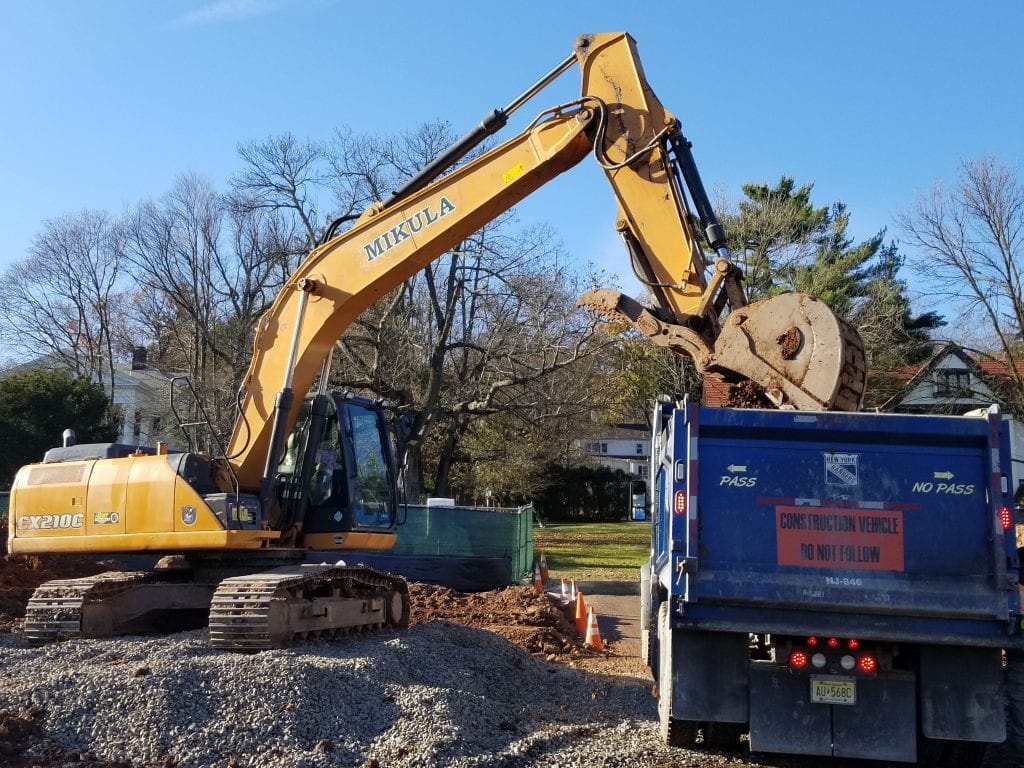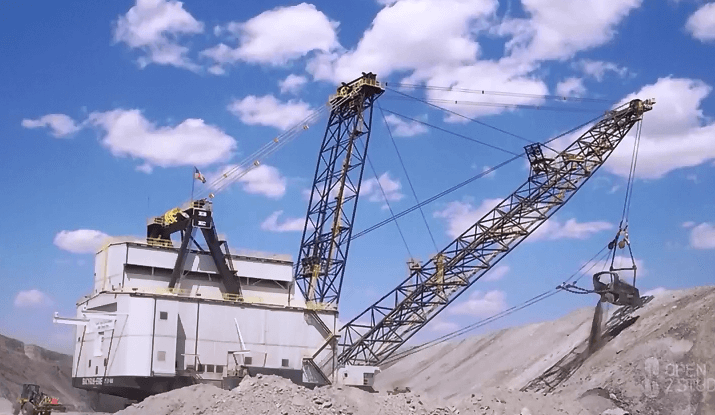The 8-Minute Rule for Excavator
How Excavator can Save You Time, Stress, and Money.
Table of ContentsEverything about ExcavatorExcavation Contractors Near Me - TruthsThe 45-Second Trick For TrencherWhat Does Demolition Mean?Excavating Contractors for Dummies


Scrapers or Pans excavate dirt in one area, haul as well as unload the soil in an additional area (trencher). It is hard to match the effectiveness of scrapes for cut/fill soil procedure if the haul distance is much less after that a mile. Scrapes are normally pulled by a rubber tire wheel tractor and also are often pushed via the cut location by an excavator.
There are lot of times that scrapes are not used for website grading as well as a dump vehicle is utilized: the haul might be to long, the haul might go across roadways where scrapes are not permitted, difficult rock may be experienced, equipment accessibility, etc. Unload vehicles remain in common use and also most likely require little discussion.
"Rock body" beds, on the various other hand, have no tailgates and also can dump any type of dimension rock, although their volume capacity is decreased. Compaction Equipment boosts the density of the dirt and also in some situations provides a smooth, rolled surface.
The Main Principles Of Trencher
From an easy examination pit to percussion exploration to core boring the proprietor has increasingly much more costly choices that yield significantly much better data concerning the site underground. For instance, the Owner on a 100,000 SF structure job might license twenty monotonous locations with split spoon dirt examples taken till rock is reached and after that core samples of rock.
Knowing the type and also top quality of rock (from the core samples) and location of rock (from the soils boring) is a real advantage in jobsite planning. Conversely, the Proprietor of a 100,000 SF structure may choose to proceed with no geotechnical screening whatsoever. The choice regarding geotechnical testing is usually made by an Owner with no input from the Building Supervisor.
An expertise of the approximate place of the rock assists the Construction Supervisor to intend the sequence of actions adhering to rock excavation. If rock is in one edge of a large building job, for example, the planet excavation can start at the opposite end of the structure in order to start foundation work soonest.
Starting the structure job early would be a great concept if the rock can be gotten rid of by ripping. Nonetheless, if the rock is extremely hard and also requires considerable blasting, it may be sensible to hold foundation job till the blasting is completed. The Construction Supervisor need to work with these types of decisions and also use all the technological day readily available.
The Ultimate Guide To Excavator
Unidentified excavation states that all rock or other unforeseen materials (leaving out dangerous products) encountered in the sitework will be the duty of the Specialist at no change in agreement price. An unidentified excavation is easier from a book-keeping perspective and also places the duty for geotechnical conditions onto the Sitework Specialist.
How Water Influences Sitework? It's fantastic what a heavy rain can do to a building task. Before the rainfall, the site may be completely dry, heavy equipment successfully moving planet, the other professions efficiently doing their job. Within hours the task can be a careless, mud-hole with employee performance cut to regarding 10%.
In a lot of areas of the globe, the Building and construction Manager need to keep in mind a simple fact: IT WILL RAIN. Great preparation can decrease the damage as well as interruption of a hefty rainfall to a jobsite. Usually the excavation and grading is delegated the Sitework Specialist (and also their Foremen is liable to manage and direct the hefty equipment as well as drivers).
The Construction Manager have to be constantly mindful of what rain will certainly do to the job website. It is not unusual for the Sitework Foreman to work their heavy devices for maximum effectiveness and hope it does not rain. Among the best methods to get ready for rainfall is to slope all qualities to drain pipes and to smooth rolled the surface area prior to a rainfall.
The Greatest Guide To Mini Excavator
The Construction Supervisor have to be perceptive enough to guarantee that hefty rainfall does not quit working on the job longer than necessary. Daily conversations with Sitework Foremen might be required to attain this goal. Whenever excavation is called for below the existing aquifer on a job, the procedure of dewatering should be thought about.
In a truly cohesive soil, the water takes a trip so gradually with the clay or silt that dewatering is not normally essential for the reasonably brief time of excavation. Dewatering might be needed for a solitary ground excavation or for an entire project site. The most usual dewatering approaches are trench drains, deep wells and well factors.
Ground water infiltration can likewise be lowered by cutoff techniques such as sheet piling. The prices for dewatering can be incredible, including tools leasing, labor and also electrical energy (or fuel). High dewatering expenses have actually faded the revenue margins on far too many tasks. The lots of variables provided below make the job of approximating dewatering expenses really hard, and also very inexact.
This option ought to constantly be considered when assessing the prospect of dewatering. Certainly the alternative is only practical if gravity can run the water to reduced ground. Trench drains pipes can be cut with a backhoe and also full of a crude, granular material (# 4 rock for instance), but care needs to be worked out in picking the water outlet type Discover More Here as well as area.
Mini Excavator for Dummies
A siphon, necessarily, makes use of air pressure to bring water from one altitude, up over a challenge, to a reduced elevation. The pipelines in a siphon system must be closed and also some resourcefulness is typically required to completely fill up the siphon pipe. The siphon pipeline must be complete for the siphon to start.
A deep well includes a pump, pipe and check out here an upright well casing. The pump consumption is at the base of the well housing (generally some crushed rock is placed down there as a filter medium) (excavating contractors). The water is pumped up the tube, out of the well housing, and to an ideal discharge location.
In a crude sand, for instance, a large location can be pumped to near the pump consumption elevation. A less absorptive dirt, on the various other hand, decreases the performance of a deep well. Since the pump is normally at the end of the deep well, there are no elevation limitations due to vacuum lift, as well as deep wells can reduce the groundwater over 50 feet.
On the base of the wellpoint there is a 2 foot long display and also valve, water jets out of this valve and produces a hole right into which the wellpoint pipeline can be lowered. This opening is typically made a bigger diameter (for instance 10 inches) to enable a a fantastic read rugged sand backfill to aid filter the water (mini excavator).